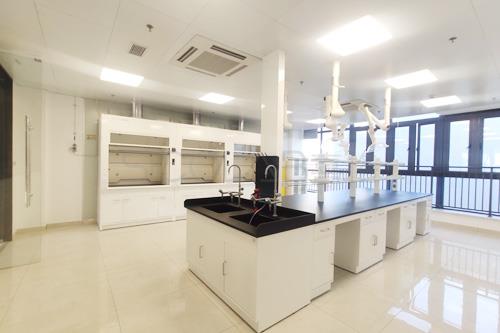In the construction of water plant laboratories, environmental protection measures should be considered to prevent pollution to laboratory personnel and the surrounding environment, which is increasingly valued in modern water plant laboratory construction. Environmental protection and pollution prevention facilities mainly include air conditioning and ventilation facilities, water supply and drainage facilities, and safety facilities. Some laboratories also include air circuit systems. The basic requirements for environmental protection and pollution prevention in the laboratory include:
① An independent water supply and drainage system should be installed in the laboratory to avoid environmental pollution or discharge pollution;
② The ventilation system includes fume hood (toxic gas cabinet), exhaust hood (fixed), movable exhaust hood, exhaust fan, etc. In order to avoid or reduce pollution to the surrounding environment, ensure that it does not affect human health and experimental results, the ventilation and exhaust of the laboratory should be concentrated in backward and high-altitude discharge;
③ Necessary storage or treatment devices should be installed for laboratory exhaust and drainage, which should be discharged after being treated to meet the standards. The ventilation and exhaust system pipes should be embedded in human walls (reserved positions during building design);
④ The laboratory should be equipped with relevant safety facilities, including fire sprinkler systems, inert gas fire extinguishing systems, safety cabinets, emergency showers, eye washers, etc;
⑤ With the improvement of laboratory testing conditions and the need for water quality testing, it is necessary to have a centralized gas supply station to distribute the required gas to the pipeline system of the laboratory and various instruments;
⑥ The laboratory should consider the impact on laboratory testing and safety when designing gas supply facilities such as gas cylinders, gas plates, gas plates, and their piping systems;
⑦ Stainless steel pipes with inert treatment on the inner surface can overcome various drawbacks of the above-mentioned pipes in addition to being expensive. They are also aesthetically pleasing and durable, making them a good choice for gas supply pipelines.




